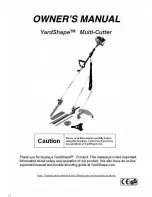
Section VI. Performing LAN Tests
What follows are a few examples of using the TVR1000 to perform
typical network troubleshooting. With a little experience, you will be
adding your own new tests. If you are new to LAN testing, please
read the “Introduction”, “The Three Phases of LAN installation”,
Appendix A, Appendix B and Appendix C of this manual. They will
provide you with some basic understanding of LAN networks before
you begin testing.
Two methods of connecting to a LAN device
There are two ways to connect the Main Unit to LAN devices. You
choose the method based on what test it is you wish to perform.
If you wish to measure the speed and duplex and determine the
device type of a single port, use the Single Port test. If however,
you are trying to determine the negotiated speed and duplex of two
devices or get two devices to communicate, use the "inline" method.
I. Single port testing:
The TVR1000 can be connected to any LAN
device (even when the LAN is operating). When the Main Unit is
connected, it will display the device's Data and Link pulses as
well as its Device Type (hub/switch, PC), Speed and Duplex.
II. Inserted
inline
between two LAN devices:
The TVR1000 can
be inserted in a LAN segment without disrupting LAN
communications between the two LAN devices. Because the
TVR1000 can display the
negotiated
speed and duplex of both
devices plus simulate a straight thru or crossover cable
connection, it helps you to quickly sort out many problems. It also
is used as an activity monitor of link pulse and data packet
activity and as a monitor of the speed and duplex of the LAN link
without affecting the link.
When the TVR1000 is connected inline
between two active devices, the devices negotiate to determine
their common speed and duplex. This is termed "negotiation."
20
Plug into
green jack
PC or hub/switch
Straight thru patch cable
(included)
SINGLE PORT
METHOD
PC or hub/switch
Main Unit's straight
thru connectors are used
in this example.
"INLINE"
METHOD
Hub/Switch
21
Summary of Contents for TS029A-R4
Page 1: ......










































